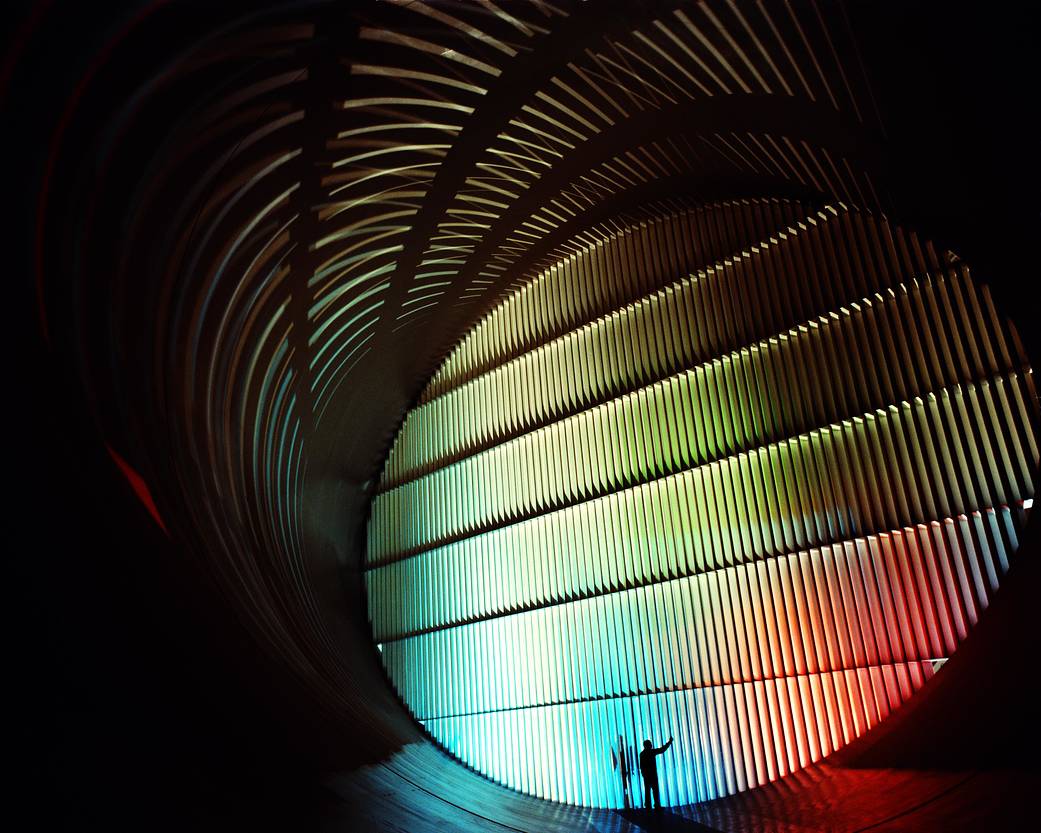A technician prepares to unlatch the door built into the guide vanes of the 16-Foot Transonic Wind Tunnel at NASA Langley Research Center, Hampton, Virginia. The tunnel, one of dozens of research facilities at Langley, was built in 1939 and most recently renovated in 1990. Operating transonically or across the speed of sound, the air in the test section travels from about 150 to 1,000 miles per hour. The tunnel is called the “16-Foot” because its test section is approximately 16 feet in diameter. The guide vanes, which form an ellipse 58-feet high and 82-feet wide, cut across each cylindrical tube at a 45 degree angle. Similar sets of vanes at the three other corners of the wind tunnel turn the air uniformly as it rushes through the 1000-foot race-track-like enclosed tube. If guide vanes were omitted, the air would pile up in dense masses along the outside curves, like water rounding a bend in a fast brook. Turbulent eddies would interfere with the wind tunnel tests, which require a uniform flow of fast, smooth air. The 16-Foot has recently been used to develop new rectangular nozzles. The new two-dimensional nozzles will be able to deflect jet exhaust in any direction. This “thrust vectoring” may allow future military aircraft to either have no tails or very small tails compared to contemporary aircraft.
2 min read

























